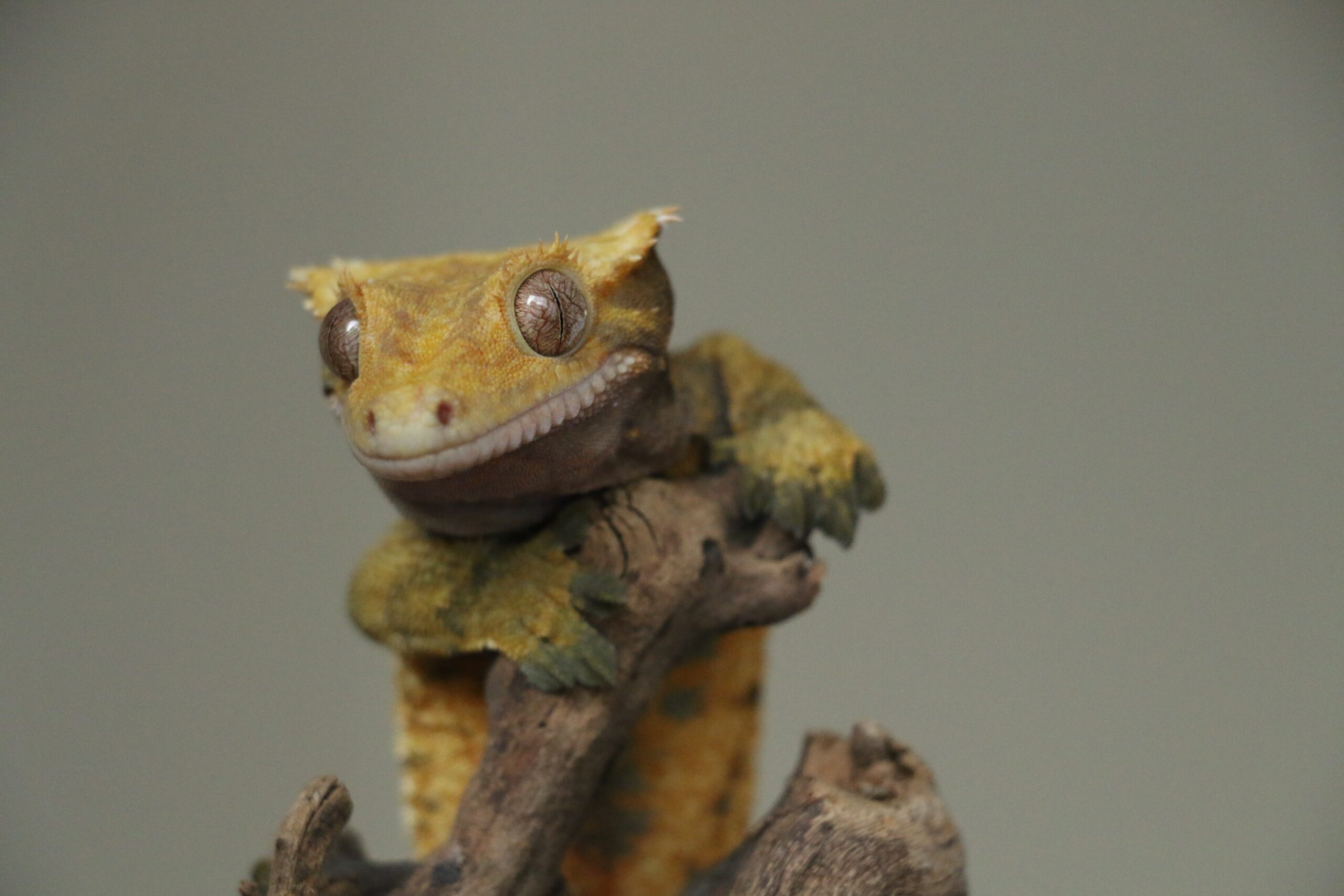Since you’re here, there is a good chance you are interested in purchasing a crested gecko, or at least learning more about them. Good call, I like you! Crested geckos are adorable little lizards and make excellent pets.

One cool fact about the crested gecko, sometimes called the “eyelash gecko” is that they are a Lazarus species. They are native to the New Caledonian Islands, in the South Pacific, and were thought to be extinct for over a hundred years! Fortunately, they were rediscovered in the 1990s, and have since become very popular pets. They remain at a very reasonable size for their entire lives, rarely exceeding eight inches from nose to tail. With the right habitat and care, they can live from fifteen to twenty years.
If you are worried about putting pressure on the native gecko population, thank you for being so environmentally conscious and responsible, but there is no need to worry. Crested geckos reproduce very well in captivity (we know, because we breed them!). This is due largely to their very manageable care requirements, which also makes them an ideal first lizard or reptile friend.
Care Basics
Temperature and Humidity
The best thing about cresties, aside from how cute they are, is that they are quite easy to care for. They don’t require special heating or lighting like many other reptiles, because their natural habitat remains generally in the range of 72-86 degrees Fahrenheit (around 22-30 degrees Celsius).
Even though cresties can tolerate temperatures as high as 86 degrees, they do best when their enclosures stay around 72 to 75 degrees, which lines up with where most people keep their homes. If your house stays cooler than this, your cresties may appreciate some supplemental heat.
Since cresties come from a very wet environment, they appreciate humidity, so try to find an enclosure that holds humidity and make sure to give your cresties a misting from a spray bottle daily. Monitor humidity levels and try to maintain between 60% and 80% humidity in the enclosure. In addition to daily misting, make sure water is always available. Aside from quenching a crestie’s thirst, evaporation of the water from the bowl will help maintain the humidity.
Substrate and Enclosure
A good substrate will also help with maintaining the humidity of the enclosure. Zilla’s Jungle Mix is a great option that holds humidity well (pro tip: mix with some moss to help make the substrate extra humidity-friendly). You might also choose Coconut fiber mixed with other soil, some peat moss mix, or even reptile carpet. A word of caution here though: when selecting a substrate, make sure that they are either sold specifically for reptiles, or are organic mixes, which means they will not have any fertilizers or other chemicals that might be harmful for your crestie friends.
Cresties spend a lot of time in the trees, so they love to climb! As they get older, they will appreciate vertical space with lots of vines, branches, cork bark, and even live plants to climb and play on. Something like this 18x18x25 inch enclosure will do nicely!

If you want to house your cresties together in a larger enclosure, you can, but be careful. Two males will fight each other, so try to house either breeding pairs, or females only, together.
Feeding
Another great thing about cresties is how easy they are to feed! While you can offer them live insects, it isn’t necessary. Many captive cresties thrive on prepared powdered diets. Repashy Superfoods, Zoo Med Crested Gecko Food, Fluker’s Crested Gecko diet, and Pangea Gecko (our favorite) diet are all excellent options. To prepare, just mix one-part powered diet to two parts water and serve. You’ll be looking for a final product about the consistency of ketchup.
Speaking of ketchup, here’s another pro tip: you can go to any grocery or kitchen store, or search on Amazon for a condiment bottle, with lid. Then, you can mix your gecko diet in there, and have a bottle ready in the fridge (and make sure you refrigerate it, as it will ferment at room temperature) anytime you need to feed your little friend! Make sure the powered diet contains insects in the ingredients as well, as protein is very important for your gecko.
If you choose to feed live insects as well, it is a good idea to dust them with a Calcium and D3 supplement. Meal worms, crickets, and Dubia roaches are all solid choices, just make sure they are appropriately sized for your gecko (use the gap between their eyes to determine food size). These little guys can be feisty, and their eyes might be bigger than their stomach (or in this case, their mouth).
Is the Crested Gecko for you?
Are you excited? You should be! Just one thing though, cresties like to jump, and like many lizards, they can drop their tails if they feel threatened. This doesn’t affect their health, but the tail will not grow back. Like with all animals, it is wise to use care when handling them. This also means you should avoid handing your crestie to young children without proper instruction and supervision.
If you want to check out our current group of cresties, head over to our current listing of available cresties. Have a question? Great, email us at [email protected] or hit us up on social media!
Think geckos sound cool, but not sure if the Crested Gecko is right for you? Great! Our next post will feature another amazing New Caledonian gecko, the Sarasinorum Gecko, so keep an eye out for that post soon, and keep an eye on our store, as we plan to have Sarasinorum Geckos available for sale soon!

